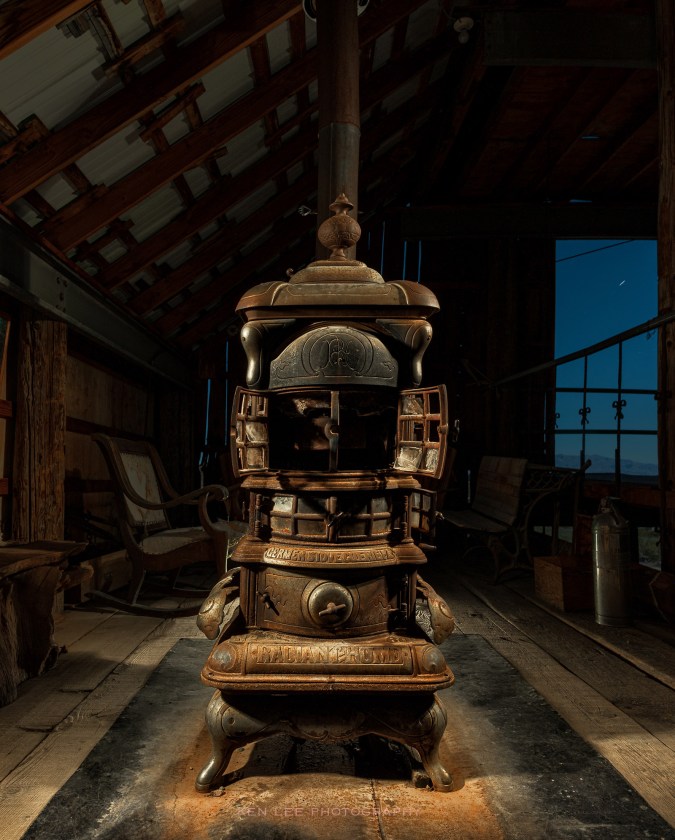What is light painting?
You might think of it as gently brushing on some light to the subject. Light painting is the act of adding light to a night photograph. Really, though, light painting is a technique that uses a handheld light source to illuminate a scene during a long exposure. You are quite literally painting the scene with light. Night photographers have used this technique for many decades.
Here’s how I approached light painting a turn-of-the-century antique stove in a ghost town!

Separating the stove from the rest of the scene
I was interested in defining the edges to “lift” the stove out of the frame. I did this by lighting the stove from the side. While the camera shutter was open, I walked around the scene, holding a ProtoMachines LED2 in my hand and lighting the stove with a warm white light from the left and right side.
I also created separation by keeping the rest of the background dark. Part of the beauty of light painting is deciding what to emphasize, and what to keep in shadow.
Why don’t you or your light show up in the image?
I am asked this question often. The reason I don’t show up in the scene is because I am generally moving about. Generally, I will not show up in an image unless I stay still for at least 10% of the total exposure. And even then, I will look like a faint, dark “cloud” at first.
The light does not show up because I used my body to block the light. In other words, I placed my body between me and the camera lens. Another night photographer, Mike Cooper (read his two-part interview here), uses cardboard to block his light.
Creating definition
To me, so much of the beauty of this antique stove is in the details. I wanted to illuminate this so we could see all the words, designs and features. I did this by creating shadows and depth by side lighting as well as lighting the stove from above. Lighting the stove straight on would create flatness. Side lighting picks up the details.
Light painting in almost near darkness
It was very dark inside. I got around by placing a dim headlamp nearby so I could see where I was walking. The headlamp was so dim that it did not affect the exposure of the photo.
We all might approach illuminating a stove like this differently. That’s part of what makes us unique as photographers. How might you go about lighting this?
Tell your story with the second annual Visual Storytelling Conference!
Experience four days of interactive, online training sessions featuring a range of educational content with experienced photographers and content creators. This free event kicks off with a series of technical boot camps to build essential skills, followed by live, online sessions on photography, video, business and social media. Join live from March 10-13, 2022!
